Heriot-Watt University
Type of resources
Available actions
Topics
Keywords
Contact for the resource
Provided by
Years
Formats
Representation types
Update frequencies
Resolution
-
Data comprise the number of macro-invertebrate taxa (including family and group name) recorded at four sites on the River Beas in November 2017. Data were generated from kick-sampling following the UK Environment Agency's standard semi-quantitative protocol. Also included are site location information (latitude and longitude). The data were collected by Heriot-Watt University under the Sustaining Himalayan Water Resources in a Changing Climate (SusHi-Wat) project funded by NERC. Full details about this dataset can be found at https://doi.org/10.5285/6bfc1787-354d-454f-8277-d9edb1e6455a
-
Data comprise reservoir inflows and release data (including spills), evaporation loss and optimised monthly rule curve ordinates (upper, lower and critical) for Pong and Bhakra reservoirs in Northern India. Also included in the rule curve data are associated reservoir rationing ratios that can be applied to gross demand when rationing is also indicated. Data contain monthly Inflows, net-evaporation loss and release (all in million cubic metres, i.e. x 10^6 m^3) as simulated by WEAP for the Pong and Bhakra reservoir for the baseline (1989 - 2008); mid-century (2032-2050) and end-century (2082-2100) periods. The future inflows were based on forcing the WEAP model of the basin with climate projections of the GFDL-CM3 CMIP model The data were collected by Heriot-Watt University under the Sustaining Himalayan Water Resources in a Changing Climate (SusHi-Wat) project funded by NERC. Full details about this dataset can be found at https://doi.org/10.5285/46135938-cc6c-44a0-b35b-f6e5f5dd1221
-
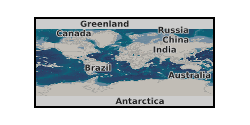
This presentation on the UKCCSRC Call 2 project Performance of Flow Meters with Dense Phase CO2 and CCS Recovery Streams was presented at the UKCCSRC Edinburgh Biannual Meeting, 15.09.2016. Grant number: UKCCSRC-C2-201.
-
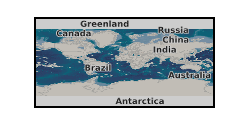
An oceanic two-phase plume model is developed to include bubble size distribution and bubble interactions, applied to the prediction of CO2 bubble plume and CO2 solution dynamics observed from the recent QICS field experiment in the Scottish sea at Ardmucknish Bay. Observations show bubbles form at between 2 and 12 mm in diameter, where the inclusion of the interactions within the simulations brings results of bubble plumes closer to that of the experiment. Under a given leakage flux, simulations show that the bubble size affects the maximum pCO2 dissolved in the water column, while the bubble interactions affect the vertical bubble distribution. The maximum modelled pCO2 increases from a background 360 ìatm to 400, 427 and 443 ìatm as CO2 injection rates increase from 80, 170 to 208 kg/day respectively at low tide. An increase of the leakage rate to 100% of the injection rate shows the maximum pCO2 could be 713 ìatm, approaching the mean pCO2 observed of 740 ìatm during the high leakage component of the experiment, suggesting that the flux may be greater than estimated due to the varied flux and activity across the pockmarks during the leakages. This is a publication in QICS Special Issue - International Journal of Greenhouse Gas Control, Peter Taylor et. al. Doi:10.1016/j.ijggc.2014.09.007.
-
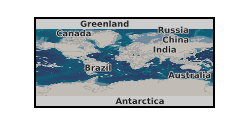
This poster on the UKCCSRC Call 2 project Performance of Flow Meters with Dense Phase CO2 and CCS Recovery Streams was presented at the CSLF Call project poster reception, London, 27.06.16. Grant number: UKCCSRC-C2-201. Captured carbon dioxide (CO2) from CCS operations needs to be transported to the storage location. Metering of the flow could be challenging due to the presence of impurities as well as unusual physical properties of the CO2 with impurities. The metering accuracy must be within the range of ±1.5% by mass according to the European Union Emission Trading Scheme (EU ETS) regulations. However, no investigations have been performed to evaluate the performance of flowmeters with pressurized CO2 at operational CCS conditions. The goal of project is to investigate the performance of Coriolis mass flowmeter with high CO2 content mixtures. Specific objectives of the project include: • To study the effect of impurities on the accuracy of the Coriolis flow meter. • To investigate the performance of Coriolis flow meter at conditions likely to happen in the CCS operations. • Evaluation of costs for the deployment of Coriolis flow meter in CCS operations.
-
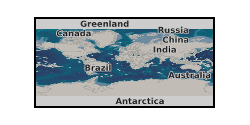
Fiscal metering could face several challenges during CO2 transport by pipelines due to the unusual physical properties of CO2 and CO2 mixtures. Coriolis flowmeters are an options to measure CO2 accurately in transport pipelines. However, the presence of impurities can affect the performance of the flowmeter. Therefore, the performance of a Coriolis flowmeter was evaluated using CO2 fluid with impurities in a mass flow-rig designed based on the gravimetric calibration in start / stop operations. In each test, the mass recorded by the Coriolis flowmeter was compared to the mass collected in the receiving facilities and measured using high accurate balance in order to obtain the relative deviation of the test. During the tests, in addition to the mass and volume flow rate, the operational pressure and temperature as well as velocity and density were recorded. The series of tests were conducted using different fluids, including: pure N2 (validation tests), pure CO2 (reference tests), pre-combustion mixture, post-combustion mixture, Oxyfuel-I mixture and Oxyfuel-II mixture. The recorded data as well as recorded and measured masses are available in the provided excel files for each investigated fluid. Grant number: UKCCSRC-C2-201
-
The dataset consists of results of the electrochemical circle fit of the Nyquist plot generated by NOVA software to measure the Charge Transfer Resistance (RCT). Data demonstrates the curve of real and imaginary resistance against charges transmitted in the media of the carbon electrode biosensor. The change in RCT can detect the presence of the targeted antimicrobial resistance (AMR) DNA. The experiments were conducted by immersing the sensor's electrode in different concentrations of the target AMR DNA to determine the limit of detection. Full details about this nonGeographicDataset can be found at https://doi.org/10.5285/6bc69e2a-c771-4538-832e-2f6824b63474
-
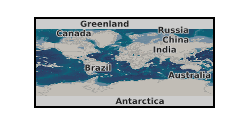
The data deposit includes results from 12 experiments that reacted carbon dioxide, seawater and limestone as a method of CO2 sequestration (as xlsx files). The data were obtained by Dr Huw Pullin, Cardiff University as part of a UKRI funded research project. Experiments were conducted under controlled temperatures (20degC), and CO2 pressures (5 and 50% v/v at 1 atm). The methods used are described in Xing et al., 2022 Chemical Engineering Journal. 431. 134096 DOI: 10.1016/j.cej.2021.134096
-
Data comprise soil temperature, air temperature, soil volumetric moisture content, relative humidity, and surface wetness data from Onset Microstation Data Loggers at five locations (within the main vegetation types) at SikSik creek catchment, Trail Valley Creek, NWT, Canada. The data were collected under Project HYDRA, a NERC funded UK research project linking Heriot Watt University, the Universities of Durham, Aberdeen and Stirling, and the Centre for Ecology & Hydrology (CEH), Edinburgh. Project HYDRA is part of the UK Arctic Research Programme. Project HYDRA studies sites in Arctic Canada to investigate the biological, chemical and physical controls on the release of greenhouse gases from permafrost into melt water and to the atmosphere and how these emissions will influence global warming. Full details about this dataset can be found at https://doi.org/10.5285/10839b38-cc29-4a07-999a-ac32e3f70609
-
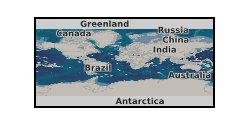
Simplified reservoir models are used to estimate the boundary conditions (pressure, temperature and flow) that are relevant to the primary aims of this project. A set of boundary conditions are defined at the wellhead that represent the behaviour of the store. Data relates to publication: Sanchez Fernandez, E., Naylor, M., Lucquiaud, M., Wetenhall, B., Aghajani, H., Race, J., Chalmers, H. Impacts of geological store uncertainties on the design and operation of flexible CCS offshore pipeline infrastructure (2016) International Journal of Greenhouse Gas Control, 52, pp. 139-154. https://www.scopus.com/inward/record.uri?eid=2-s2.0-84978197316&doi=10.1016%2fj.ijggc.2016.06.005&partnerID=40&md5=d567f0e06f561613554a1f1c2e230194 DOI: 10.1016/j.ijggc.2016.06.005
 NERC Data Catalogue Service
NERC Data Catalogue Service